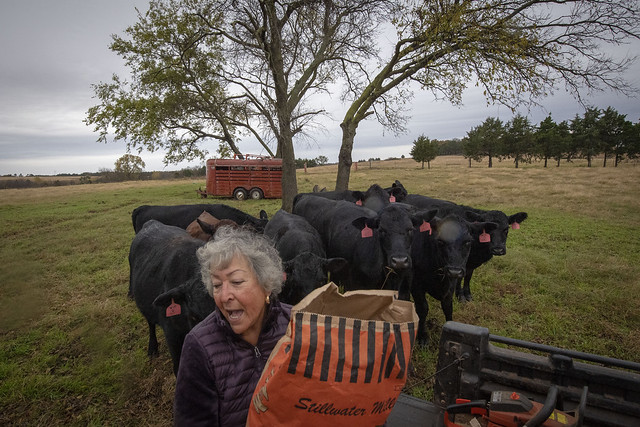Early mornings. Long days. Late nights. Rain, snow, sleet, or shine. And clocking in a 40-hour work week by Tuesday or Wednesday.
This is the “9 to 5” for many of America’s agricultural producers.

As we approach Thanksgiving, it’s important that we show our gratitude for the farmers, ranchers, and forest managers who provide us food, fiber, and fuel. Ag producers feed, clothe, and power our nation.
Every day, I’m thankful to be here at USDA, where I get to meet and serve farmers, ranchers, and forest managers from across the country. Improving our service to our customers is one of the chief priorities of Agricultural Secretary Sonny Perdue. I couldn’t agree with him more. I know it is important to each of you.
Together we’re working to reduce redundancy, boost efficiency, and improve access to USDA program information and services. That way, we can better provide the assistance that our country’s ag producers need.

Supporting Producers
Through the Farm Bill, we help farmers get funding to start or grow their operations, adopt conservation practices, recover after natural disasters, and manage risk. From markets to Mother Nature, farmers battle a lot of obstacles to earn a living, and we want to be sure we’re not one of them.
The past two years have been particularly tough for farmers. Wildfires have burned through ranches out West, and hurricanes have blown through farms and working forests down South. Markets also have been soft, and then we add to that the impact of unjustified foreign retaliatory tariffs.
To help with recovery, USDA this year:
- Has invested more than $346 million to help producers rebound from natural disasters, including replant trees and bushes, offset losses of crops and livestock, and rebuild infrastructure.
- Is making available more than $32.2 million to help producers in 18 states make conservation investments on their farms impacted by hurricanes, wildfires and drought.
- Has invested nearly $1.1 billion to help producers mitigate against losses through export markets.
- Has helped offset the losses of producers who lost crops to hurricanes Florence and Michael with $53 million in payments through their crop insurance coverage.
- Has helped offset the losses to drought with $1.95 billion in payments through crop insurance.
By supporting producers, we’re investing in our food supply – both now and for future generations. We’re helping farmers keep farms in their families and build resiliency to weather the ups and downs of today. It is also important for us to support the stewardship provided by these farm families that care for the bulk of our private lands.
Thank a Farmer
To our farmers, thank you for all that you do! We encourage you to stop by your local USDA service center to see what programs and services can help support you.
To everyone else, when you gather with your friends and family this Thursday, we ask that you keep farmers in mind. I know we’ll be doing that at the Northey house.

Bill Northey serves as USDA’s Under Secretary for Farm Production and Conservation, leading the Farm Service Agency, Natural Resources Conservation Service, and Risk Management Agency. He formerly served as the commissioner of the Iowa Department of Agriculture, and when he is not in Washington, D.C., you can find him on his family farm in Iowa.


